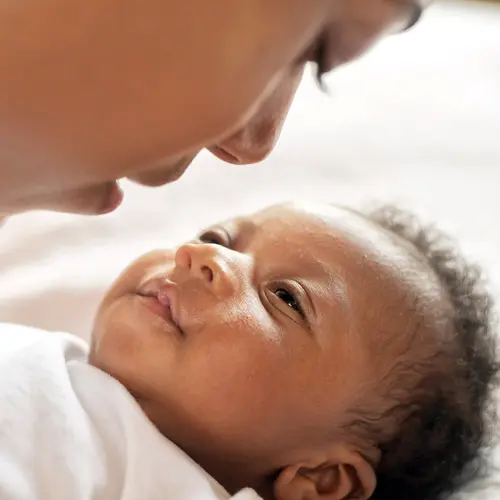Take it from Sarah O'Meara, a mother of three: accidents take only seconds. When her first child was around 3 months old, she was changing his diaper, and because he wasn't moving around much at that age, she didn't strap him onto the changing table. She let go for just a moment to grab something, and boom, he hit the floor.
Fortunately the baby wasn't hurt. "But it was really frightening, just to hear that thump on the floor," O'Meara recalls. The experience was enough to turn her into a die-hard changing-table strapper. "I thought he was too little to roll over, but it's the same old story -- they always roll over when you think they can't."
O'Meara and her baby boy were lucky. Nearly 800 babies died in accidents in 1997, and thousands wound up in hospital emergency rooms, according to the U.S. Centers for Disease Control and Prevention. And when an accident sends a baby under 6 months to the ER, it's most likely to have been a fall.
The message from doctors and other safety experts: no matter how young your baby is, it's not too early to begin thinking about safety measures and baby-proofing.
One Step Ahead
"The key to preventing injuries in pediatrics is anticipatory guidance -- thinking about the event before it ever occurs," says Dr. Flaura Coplin Winston, director of TraumaLink at the Children's Hospital of Philadelphia and University of Pennsylvania.
Sure, you have a few months before your infant is mobile enough to open cabinets and pull down furniture, but don't wait to protect your infant. Even before your baby is born, you can:
- Get a secure, rear-facing car seat
- Make sure your crib and bedding meet safety guidelines
- Start thinking about safety hot spots by conducting a room-by-room survey of your house.
Dr. Winston even suggests a "baby-safety shower" for new parents so they're stocked with the basics from day one, including:
- cabinet and drawer latches
- window and faucet guards
- electrical outlet covers
- baby gates
- toilet locks
- padding and anti-tip devices for furniture
Second-Hand Trouble
Don't be afraid to return baby gifts from well-meaning friends if the items pose a safety hazard. One notorious example is the baby walker, the use of which is discouraged by the American Academy of Pediatrics. Half of all babies who use walkers are injured, typically from falls or because they can navigate to heavy or hot objects before a parent is able to run to the rescue.
Many experts also caution against using bath rings since babies can slide out and drown -- even in two inches of water. Another bath tip: babies have thinner skin than older children or adults, so test the water temperature first with your elbow, which is more sensitive than a finger, says Dr. Winston. Swish the water to get a sample underneath.
For more information on new or used products that may be unsafe or recalled, visit the Consumer Products Safety Commission's Web site or call its toll-free number at (800) 638-2772. The National Safe Kids Campaign also provides fact sheets on child safety on its Web site.
Heads Up for Baby's Noggin
Even if you think you'll be watching your baby all the time, get the latches and safety devices anyway, and always be on your guard, advises Dr. Douglas Baker, chief of emergency medicine at Yale-New Haven Children's Hospital and member of the AAP's section on pediatric emergency medicine.
"There's no human being ever born who's been able to foolproof anything in terms of infant and child safety," says Dr. Baker. "The baby will outsmart you every time."
Since babies' heads are disproportionately larger and heavier than adult heads in relation to the rest of the body, infants more prone to injuring their heads in falls, adds Dr. Baker. Preventing head and brain injuries should be your primary concern, because they heal less effectively than other parts of the body. So always keep a hand on your baby when she's on something she can fall from, and keep supplies within easy reach of the changing table, or carry her with you when you go to get them.
Too Cautious? Never
When you're out and about in the car, always put babies in the back seat to avoid injuries from air bags, and strap them into a rear-facing car seat until they're a year old and at least 20 pounds. If your baby is heavier than 20 pounds but not yet a year old, find a seat that converts from rear- to front-facing. For small infants or low-birth weight babies, a five-point harness fits better than a shield-type harness.
Infant car seats can reduce the risk of death by as much as 71% if used correctly. Unfortunately, 85% of all car seats are installed or used improperly, according to studies by the National Safe Kids Campaign. If you're unsure about your car seat, before you strap baby in, have it checked out by a certified car seat technician. Local hospitals and many General Motors dealers provide the service free in conjunction with the Safe Kids campaign. For details, visit the Web sites for Safe Kids or the National Highway Traffic Safety Administration, which provides a searchable database of car seat technicians.
Meanwhile, back at the house: "Once babies start to crawl, they are disasters waiting to happen," says Dr. Winston, who is also a member of the AAP's section on injury and poison prevention.
At home, on the road, or visiting someone else's house, there's no such thing as being too cautious when it comes to your baby's safety. Especially by the age of 6 months, it's a parent's full-time job to keep eyes and ears peeled all of the time.

